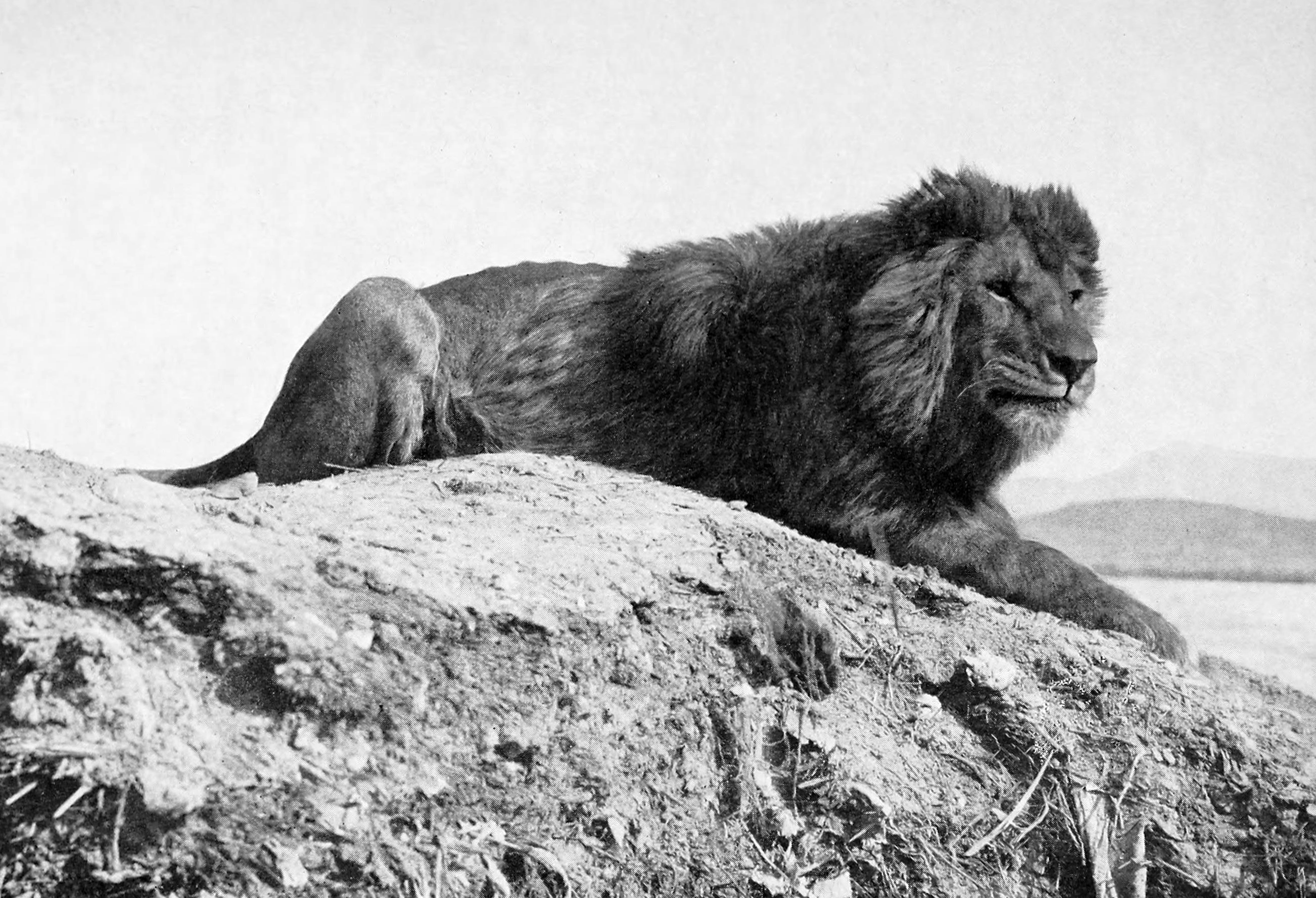
Lions (Panthera leo) are some of the most iconic creatures on Earth. Unusual among big cats for both their social behaviour and striking sexual dimorphism, these ‘kings of beasts’ have been important to humans since the dawn of mankind. Some lions have even managed to transcend the general notoriety of their species to stake out a lasting place in our culture. Here’s a quick look at 10 of the most famous lions throughout history.
In 2015, Cecil the lion made global headlines when he was killed as a trophy by American dentist Walter Palmer. Cecil was a resident of Hwange National Park in Zimbabwe, where he gained renown due to his recognisable black-edged mane and lack of fear of park vehicles, allowing visitors regular close-up views. Cecil was also tagged as part of an Oxford University study, and wore a large GPS tracking collar. In July, Cecil was reputedly lured away from the safety of the park, shot with an arrow, then tracked and killed with a rifle. Of the 62 lions tagged during the Oxford study, 24 have been killed by sport hunters.
The Hollywood film studio Metro-Goldwyn-Mayer, or MGM, has used a lion as its mascot since the founding of the company in 1917. While many different lions have appeared over the years, Leo the Lion is the most famous, with the longest run—from 1957 to the present. Born in the Netherlands, Leo was brought to Hollywood as a young adult, where his successful career spanned several films, commercials and television episodes.
In December 2015, a lioness named Bibi was found dead from poisoning at the Masai Mara reserve in Kenya. Bibi was a member of the Marsh pride, which was followed for more than a decade by the popular BBC show Big Cat Diary. Six other lions from the pride were also poisoned, though not all were killed. Poisoning is an unfortunately common act of retaliation by local ranchers, who graze their cattle near the borders of the reserve.
Tsavo Man-Eaters
Perhaps the most notorious man eating lions of all time, mainly due to the films made about their exploits, the Tsavo man-eaters were a pair of male lions that lived in Kenya in 1898. Unusually, the male lions lacked manes, and together devoured at least 35 members of a railroad bridge construction crew. The ensuing panic led to mass defections and halted construction, which was only resumed once both lions had been hunted down. The skulls of the man-eaters are now on display at the Chicago Field Museum.
Chauvet Cave Lions
Discovered in 1994, the paintings of the Chauvet Cave in southern France are among the earliest and largest collections of prehistoric art in the world. The cave paintings depict an incredible diversity of Pleistocene animals, including cave lions, which the artists must have been quite familiar with. Cave lions were larger than modern lions and males lacked large manes. Though widespread throughout much of Europe, Asia and North America, cave lions went extinct roughly 12,500 years ago.
Nemean Lion
In Greek Mythology, the Nemean Lion was a powerful monster that Hercules was tasked to kill as the first of his twelve labours. The beast’s hide was said to be impervious to blades or arrows, requiring Hercules to wrestle the lion and strangle it to complete his mission. Writings of the historian Herodotus (484—425 BC) suggest that lions were distributed throughout ancient Greece.
Leo (Constellation)
Leo, the Latin word for lion, is one of the earliest recorded constellations, with ties to ancient Mesopotamia, Persia, India and Greece. The constellation represented the Nemean Lion in Greco-Roman culture, and is one of the twelve symbols of the Western zodiac. Leo is visible throughout the northern hemisphere from the spring equinox until the summer solstice.
The Man-Eaters of Njombe
The Man-Eaters of Njombe were a pride of lions that reportedly worked together to devour more than a thousand people in southern Tanzania between 1932 and 1947. It’s likely that the lions were driven to specialise on human prey by colonial land management policies, which had eradicated available prey species in an effort to stop the spread of rinderpest among livestock herds. The hungry lions transitioned to other large mammalian prey—humans, until they were eventually exterminated by a game warden.
Aslan

No lion list would be complete without Aslan, the magical talking lion at the centre of fantasy author C.S. Lewis’ The Chronicles of Narnia series. Aslan, which is also the Turkish word for lion, is commonly considered to be an allegory for Christ.
Christian the Lion
Christian the Lion, made famous by two documentaries and countless Internet adaptations of his ‘reunion video’, was purchased from Harrods department store in London in 1969. Australian travellers John Rendall and Ace Bourke bought the cub and raised him in their Chelsea apartment until he grew too large for their flat, requiring them to relocate to the country. Despite their happy life, Bourke and Rendall eventually made plans to return Christian to the wild in Kenya. One year after Christian’s successful reintroduction, Rendall and Bourke travelled to Kenya to visit him. Their reunion, captured on video, demonstrates a very special relationship between man and lion.
By the way, if you love nature documentaries, well we’ve got the online streaming service for you.









